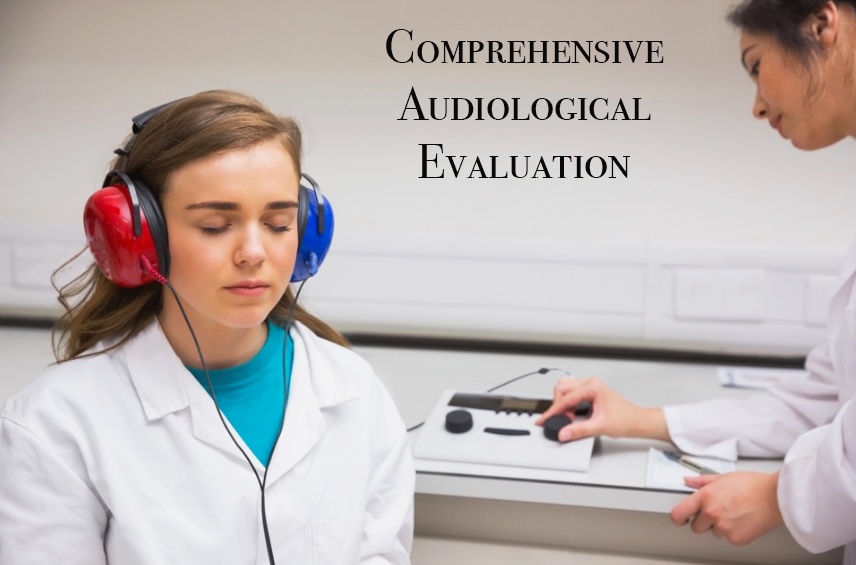What Is a Comprehensive Audiological Evaluation?
You may remember doing hearing tests in school. Back then, they stuck headphones on your head and told you to raise your hand every time you heard a beep.
Although those types of hearing tests were able to accurately screen for hearing loss, they didn’t capture the whole picture of your hearing.
At Arizona Hearing Center, we have the equipment to do a more thorough hearing test called a Comprehensive Audiological Evaluation. This evaluation not only tests the patient’s ability to hear the important pitches necessary for speech comprehension, but also how the patient hears through their ear canals, hearing nerves, how they understand words, and the state of their eardrums and bones of hearing.

There are three parts to a Comprehensive Audiological Evaluation:
Tone Test
The tone test is what you would commonly associate with a hearing test: the beep test that you often had to do in middle school. This test evaluates how well a patient can hear different pitches at varying degrees of loudness. The test presents beeps across various frequencies (pitch) and measures how loud the beep needs to be until it is detected.
The beep is presented through the ear canal, eardrum and bones of hearing, and it is also sent directly to the hearing nerve. Unlike the hearing screens in school though, this tone test determines both how well a patient can hear through the ear and how well they can hear through their hearing nerve.
Speech Test
The speech test assesses the patient’s ability to hear and understand words correctly at a volume they can hear. This volume is typically presented at the patient’s most comfortable loudness level. At this volume, words will be presented and the patient will be asked to repeat them while the clinician tallies the score. The results are presented as a percentage of the words heard correctly. This percentage score is often confused by patients when the ask for the percentage of their hearing loss.
Tympanogram
In a tympanogram, we are testing the mobility of the eardrum. The clinician does this by changing the pressure in the canal from negative to positive and measuring the eardrum’s ability to reflect sound.
Normal eardrums will produce a measurement with a peak, since eardrums vibrate best at normal pressure. If the measurement is close to a flat line, the eardrum is not functioning well and can indicate there is fluid behind the eardrum.
The size of the ear canal is also measured, and can indicate a hole in the eardrum if the canal volume is elevated. If there is wax or a foreign body in the canal, the volume of the canal is often reduced.
These three tests allow Arizona Hearing Center to more fully understand the nature of your hearing loss and better assess how to treat it.
If you would like a comprehensive evaluation of your hearing, please don’t hesitate to give us a call at 602-307-9919 so we can schedule a hearing evaluation for you or your loved one.



